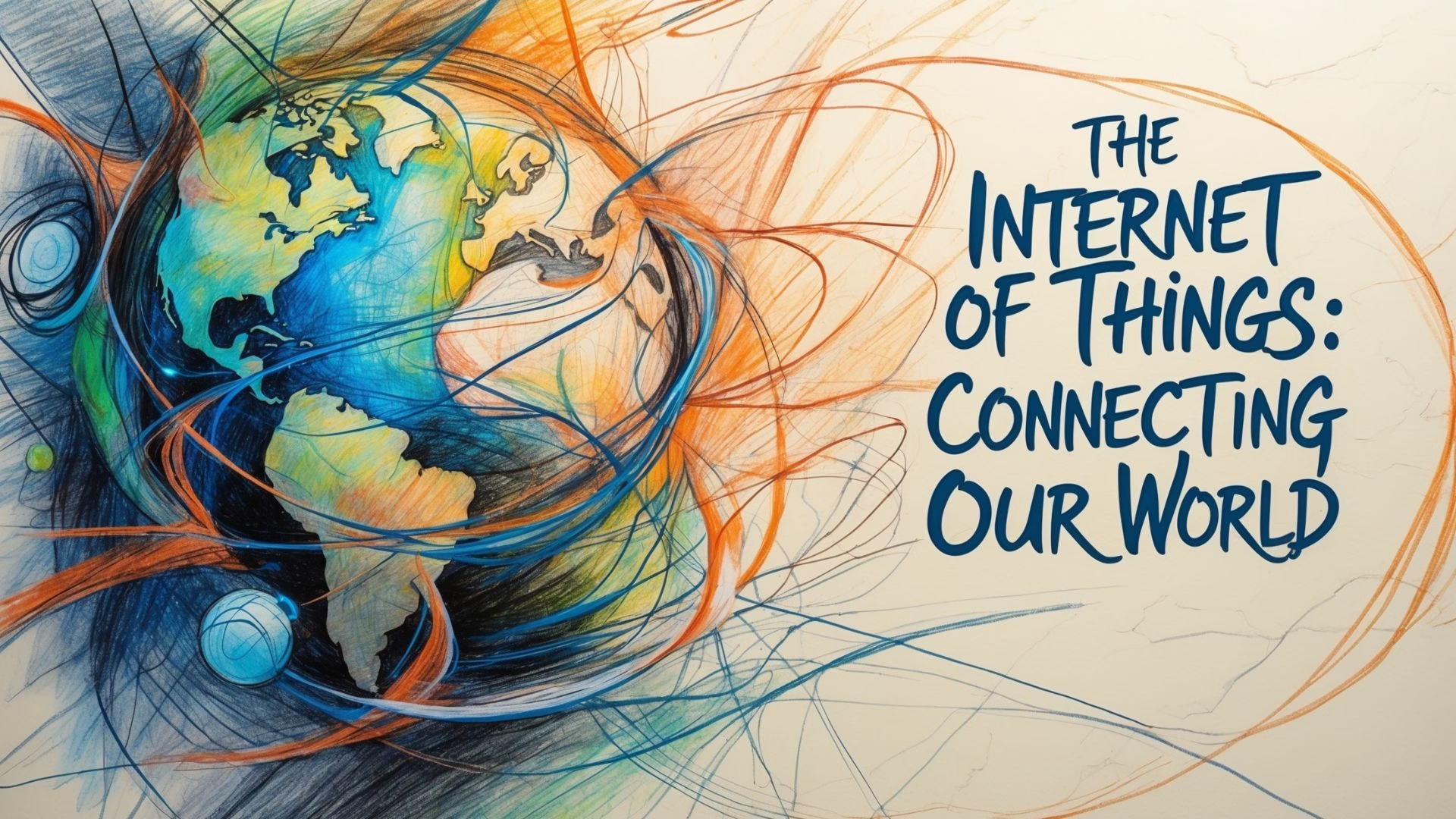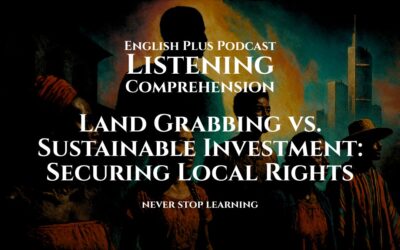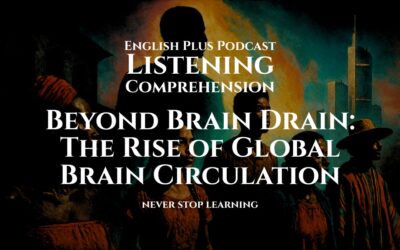Listening for Technical Concepts and Implications
This listening practice exercise focuses on a topic shaping our future: The Internet of Things (IoT). For exams like the SAT, TOEFL, or IELTS, you often need to understand lectures that explain technical concepts, discuss benefits and drawbacks, and explore future possibilities.
Here are some tips tailored for this type of listening:
- Grasp the Core Definition: Pay close attention when the speaker defines the main concept (IoT). What are its key components? How does it work in simple terms? Understanding the definition is fundamental.
- Listen for Examples: Technical topics are often made clearer through examples. Note the specific examples the speaker uses (e.g., smart homes, wearables) as they illustrate the abstract concept and are often tested in questions.
- Identify Pros and Cons: Lectures often present a balanced view. Listen for signal words indicating advantages (e.g., “benefits include,” “one advantage is,” “improves”) and disadvantages/challenges (e.g., “however,” “concerns include,” “a major drawback is,” “risks involve”). Questions frequently ask about these.
Let’s begin the listening passage explaining the Internet of Things.
Listening Quiz
Listening Transcript
Listening Transcript: Please don’t read the transcript before you listen and take the quiz.
Good morning, class. Today we’re diving into a concept that’s rapidly moving from futuristic buzzword to everyday reality: the Internet of Things, or IoT. You’ve likely encountered aspects of it already, perhaps without even labeling it as such. So, what exactly is the Internet of Things? Put simply, it refers to the vast network of physical objects – devices, vehicles, home appliances, and other items – embedded with sensors, software, and connectivity, which enables these objects to connect and exchange data with each other and with larger systems over the internet. Think of it as extending internet connectivity beyond standard devices like computers and smartphones to a whole range of traditionally ‘dumb’ objects.
How does it work? At the heart of IoT are three main components. First, you have the ‘things’ themselves – the physical objects equipped with sensors. These sensors collect data from their surroundings, like temperature, motion, location, light levels, or biometric readings. Second, there’s connectivity. The collected data needs to be sent somewhere. This is achieved through various communication protocols – Wi-Fi, Bluetooth, cellular networks (like 4G or 5G), LoRaWAN, and others – allowing the devices to transmit their data to the internet or a local network. Third, there’s data processing. Once the data reaches a central system (often cloud-based), it needs to be processed, analyzed, and interpreted. This analysis can then trigger actions, provide insights, or be presented to users via an interface, like a smartphone app.
Let’s consider some tangible examples to make this clearer. In a ‘smart home,’ IoT connects appliances like thermostats, lighting, security cameras, and locks. Your smart thermostat learns your schedule and adjusts the temperature automatically to save energy, collecting temperature data (sensor), sending it via Wi-Fi (connectivity), and using algorithms (processing) to make adjustments. Wearable fitness trackers monitor your heart rate and activity levels (sensors), sync data to your phone via Bluetooth (connectivity), and use an app to display health insights (processing and interface). In industry, IoT sensors on machinery can predict maintenance needs before a breakdown occurs, monitoring vibrations or temperature (sensors), transmitting data (connectivity), and using predictive analytics (processing) to schedule repairs, thus optimizing operations and preventing costly downtime. This is often referred to as the Industrial IoT or IIoT. Even cities are becoming ‘smarter’ using IoT for traffic management, waste collection optimization, and monitoring air quality.
The potential benefits of the Internet of Things are immense. Enhanced efficiency and productivity are major drivers, particularly in industry and logistics, through process automation and optimization. Improved convenience and quality of life are evident in smart homes and personalized healthcare monitoring. Resource conservation, such as optimizing energy use in buildings or water management in agriculture, is another significant advantage. Furthermore, the vast amounts of data generated by IoT devices can lead to better decision-making and insights across various sectors, from retail understanding customer behavior to scientists monitoring environmental changes.
However, the rapid proliferation of connected devices also brings significant challenges and concerns that must be addressed. Security is perhaps the most prominent worry. Every connected device represents a potential entry point for cyberattacks. If IoT devices, especially those controlling critical infrastructure or handling sensitive data, are not adequately secured, they can be compromised, leading to data breaches, disruption of services, or even physical harm. Think about the security implications of connected cars or medical devices. Ensuring robust security protocols, encryption, and regular updates across billions of diverse devices is a monumental task.
Privacy is another major concern. IoT devices, particularly those in our homes and wearables, can collect vast amounts of personal data about our habits, routines, health, and location. Who owns this data? How is it being used? Is it being shared or sold without our explicit consent? The potential for surveillance and misuse of personal information is significant, raising critical ethical and regulatory questions. Striking a balance between harnessing the benefits of IoT data and protecting individual privacy is crucial.
Data management and analysis also pose challenges. The sheer volume, velocity, and variety of data generated by IoT devices (often called Big Data) require sophisticated infrastructure and analytical tools to store, process, and derive meaningful insights. Furthermore, interoperability – ensuring that devices from different manufacturers can communicate and work together seamlessly – remains an ongoing challenge, hindering the full potential of a truly interconnected ecosystem. Standardization efforts are underway but progress is gradual.
Looking forward, the Internet of Things is set to become even more integrated into the fabric of our lives. The rollout of 5G networks promises higher speeds and lower latency, enabling more complex and real-time IoT applications. Advances in artificial intelligence (AI) and machine learning will allow for more sophisticated analysis of IoT data and more autonomous decision-making by connected systems. We’re likely to see further growth in areas like autonomous vehicles, advanced telehealth, smarter cities, and highly automated industries. However, realizing this future responsibly requires concerted effort from technologists, policymakers, businesses, and consumers to prioritize security, protect privacy, establish clear standards, and ensure the benefits of this powerful technology are shared equitably. The Internet of Things holds incredible promise, but navigating its complexities requires careful consideration and proactive governance. Thank you.
Glossary
- Buzzword: A word or phrase, often an item of jargon, that is fashionable at a particular time or in a particular context. In the talk: IoT moving from being a trendy term (“buzzword”) to reality.
- Embedded: Fixed firmly and deeply in a surrounding mass; implanted. In the talk: Devices have sensors and software fixed within them (“embedded”).
- Biometric: Relating to or involving the application of statistical analysis to biological data; commonly refers to identification methods like fingerprint or iris scans, but also physiological measurements. In the talk: Sensors collecting biological data (“biometric readings”) like heart rate.
- Tangible: Perceptible by touch; clear and definite; real. In the talk: Used to introduce concrete, real-world (“tangible”) examples like smart homes.
- Optimize: Make the best or most effective use of (a situation, opportunity, or resource). In the talk: Using IoT to improve operations (“optimizing operations”) or energy use.
- Proliferation: Rapid increase in the number or amount of something. In the talk: The rapid increase (“proliferation”) of connected devices raises concerns.
- Prominent: Important; famous; projecting from something. In the talk: Security is described as the most important (“prominent”) worry.
- Compromised: (In a security context) Having vulnerability exploited; no longer secure. In the talk: Devices that are hacked or accessed illegitimately (“compromised”).
- Monumental: Great in importance, extent, or size; resembling a monument. In the talk: Securing billions of devices is described as a huge (“monumental”) task.
- Surveillance: Close observation, especially of a suspected spy or criminal, or more broadly, monitoring of behavior/data. In the talk: The potential for IoT data to be used for unwanted monitoring (“surveillance”).
- Interoperability: The ability of computer systems or software to exchange and make use of information. In the talk: The challenge of making devices from different brands work together (“interoperability”).
- Seamlessly: Smoothly and continuously, with no apparent gaps or spaces between one part and the next. In the talk: The goal for devices to work together smoothly (“seamlessly”).
- Latency: The delay before a transfer of data begins following an instruction for its transfer. In the talk: 5G offers less delay (“lower latency”), important for real-time apps.
- Autonomous: (Of a country or region) having self-government; (of a device or system) capable of operating independently without human control. In the talk: Future applications like self-driving cars (“autonomous vehicles”).
- Equitably: In a way that is fair and impartial. In the talk: Ensuring the benefits of IoT are shared fairly (“equitably”).










0 Comments